Discover fascinating details and captivating visuals about the remarkable Megalodon, the colossal shark that once roamed the Earth’s oceans. This extinct species, which existed approximately 15.9 to 2.6 million years ago, holds the distinction of being the largest shark and quite possibly the largest fish ever known.
Imagine a predator of truly immense proportions, with an estimated maximum length reaching an astonishing 18 meters (59 ft.). To put it into perspective, that’s almost one and a half times the size of the whale shark, the largest fish currently alive. Astonishingly, some scientists even speculate that this prehistoric giant might have grown even bigger than our current estimations!
Top Ten Megalodon Facts
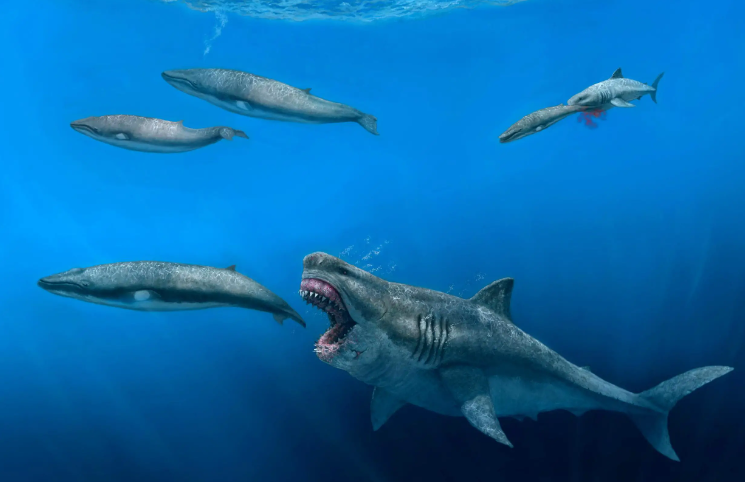
- The megalodon weighed from 50 to 75 tons.
- It was between 12 and 21 meters (40 to 70 ft.) in length.
- Its teeth were up to 19 cm (7.6 in.) in length
- The megalodon lived from 15.9 to 2.6 million years ago (Mya), during the Miocene and Pliocene epochs of the Neogene Period.
- The name ‘megalodon’ means ‘large tooth’.
- Scientists estimate that the megalodon’s bite force was between 108,514 and 182,201 newtons. (A modern day saltwater crocodile’s bite force is 16,460 newtons.)
- The giant fish’s extinction was caused by global cooling.
- Parts of megalodon teeth have been found in the fossilized remains of whales.
- There is some argument over how the megalodon should be classified. New research suggests that the megalodon may not be as closely related to today’s great white shark as was once thought.
- Depending on how it is classified, the megalodon’s scientific name is either Otodus megalodon or Carcharocles megalodon
What Did Megalodon Look Like?
The megalodon, resembling the modern great white shark, possessed a remarkable size and a robust physique surpassing its contemporary counterpart. Unlike the pointed nose of the great white, the megalodon likely had a less tapered snout, and its jaws were broader and more level.
To stabilize its substantial body while navigating through water, the megalodon sported lengthy pectoral fins located on either side of its body, just behind the head. These fins played a crucial role in maintaining balance and maneuverability.
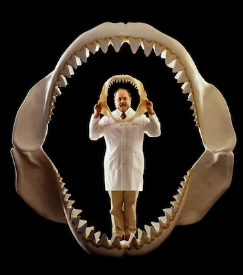
How Big Was Megalodon?
According to estimates, the megalodon, a gigantic prehistoric shark, possibly reached a maximum length of 25 meters (82 ft.), although the prevailing consensus suggests a slightly smaller yet still impressive length of 18 meters (59 ft.).
On average, the megalodon was likely around 10.5 meters (34 ft.) in size, although variations in size may have existed depending on their geographical location.
In comparison, the largest recorded great white shark measured approximately 7 meters (23 ft.) in length, emphasizing the colossal size of the megalodon.
The megalodon is believed to hold the title for the largest fish ever known to have existed.
Paleontologists, who study ancient life, estimate the size of the megalodon by comparing fossilized teeth and vertebrae with those of present-day sharks. By observing the correlation between tooth width and body length in living shark species, scientists can make approximations regarding the megalodon’s size based on the width of its teeth.
The largest megalodon tooth discovered thus far measures 18.4 centimeters (7.25 in) in length, nearly three times longer than a tooth from a great white shark.
The name “megalodon” stems from its impressively large teeth, with the term itself translating to “large tooth.”
Megalodon Family And Related Species
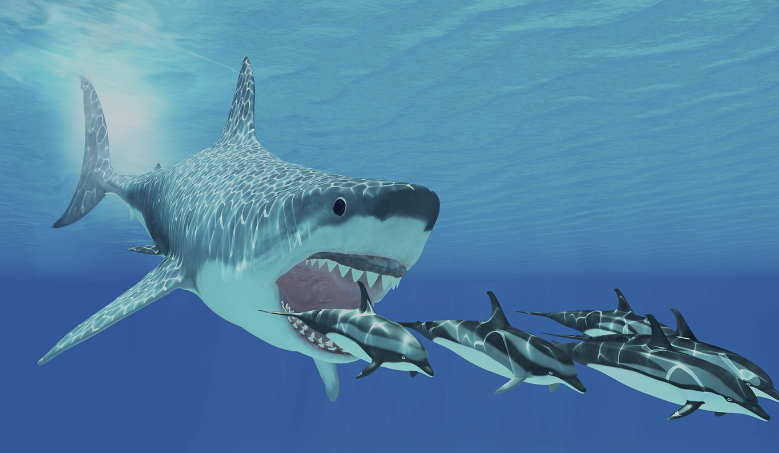
There has been some uncertainty regarding the megalodon’s connection to modern species. Initially, it was thought to be closely related to the great white shark, scientifically known as Carcharodon carcharias. Consequently, it was classified under the same genus and family, namely Charcharodon and Lamnidae. This led to the scientific name Charcharocles megalodon being assigned to the megalodon.
However, through comparisons of megalodon teeth with those of other shark species, most scientists now believe that it is more closely related to another extinct shark called Otodus obliquus, which belongs to the genus Otodus and family Otodontidae. Therefore, the megalodon’s current scientific name is Otodus megalodon.
Both the Lamnidae and Otodontidae families fall within the Lamniformes order, which includes various living sharks. Sharks belonging to the Lamniformes order are commonly referred to as “mackerel sharks.”
If terminologies like “genus” and “family” are causing confusion, you can refer to the article on Animal Classification for further clarification. It is now believed that the ancestor of the great white shark coexisted with the megalodon, and these two types of sharks might have even competed for food.
When Did Megalodon Live?
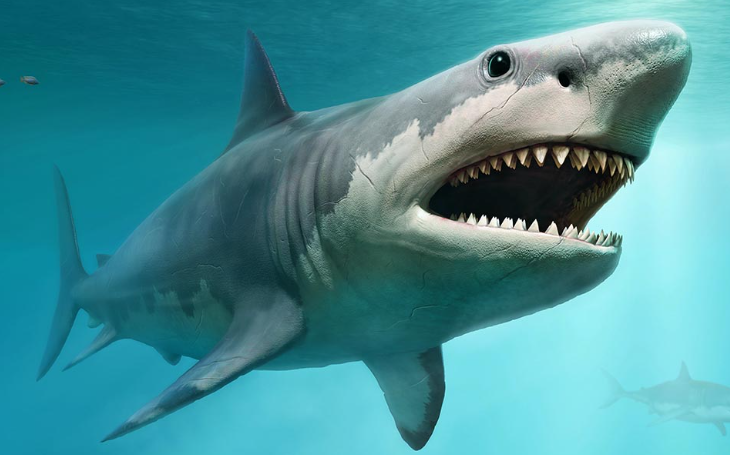
The mighty megalodon roamed the oceans during the Neogene Period, specifically the Miocene and Pliocene epochs. Its existence is estimated to have begun approximately 15.9 million years ago during the Middle Miocene, and it is believed to have gone extinct around 2.6 million years ago, marking the end of the Pliocene Epoch.
There are some scientists who speculate that the megalodon might have emerged even earlier, around 23 million years ago, at the onset of the Miocene epoch.
To provide some context, the Miocene epoch spanned from roughly 23.03 to 5.33 million years ago, while the Pliocene epoch extended from 5.33 to 2.58 million years ago.
Why Did The Megalodon Become Extinct?
During the Early Miocene period, the climate was relatively warm. However, approximately 14 million years ago, a significant event called the Middle Miocene Climate Transition occurred, leading to a sudden decrease in global temperatures. Another temperature drop occurred around 8 million years ago, and this cooling trend persisted throughout the Pliocene Epoch.
It is believed that global cooling played a role, directly or indirectly, in the extinction of the megalodon:
- The megalodon was adapted to thrive in warmer waters, and it possibly couldn’t survive in the new, colder oceans.
- The cooling of the oceans might have caused the extinction of the megalodon’s prey, disrupting its food source.
- Prey species could have been more capable of adapting to the colder climate, prompting them to migrate to regions that were too frigid for the megalodon to pursue.
- The megalodon likely gave birth near the shore, where its offspring would have been relatively protected from predators. As the polar regions experienced ice formation and sea levels dropped, these secure breeding grounds either vanished or became inaccessible to the shark.
Where Did Megalodon Live?
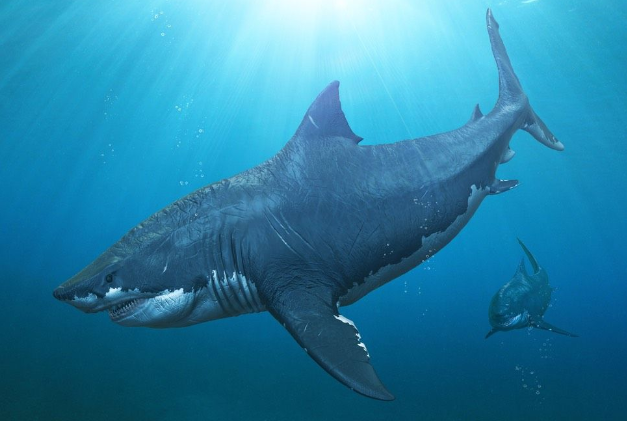
The megalodon was found all around the world. Its teeth have discovered in Africa, North America, South America, India, Australia, Japan and Europe. The only continent on which they have not been found is Antarctica. A number of megalodon fossils have been found in areas of high elevation.
This indicates that these areas were underwater when megalodon was alive, and that the climate must have changed considerably since megalodon since the fossils were deposited.
Megalodon Life Cycle
Based on the reproductive methods of living mackerel sharks, the megalodon is believed to have given birth to fully developed live young, via a process known as ovoviviparity. In ovoviviparity, the eggs hatch inside the mother, and the embryos continue their development inside the mother before being born.
In living mackerel sharks, the first embryos to hatch will actually eat the other eggs – a system known as oophagy.
Megalodon Diet And Prey
The megalodon possessed the large serrated teeth of a meat eater. Due to its colossal size, it would have had to eat large amounts of food. Its diet would likely have included large marine animals such as whales, large fish, and possibly other sharks.
This is supported by the discovery of fossilized whale bones in which marks from megalodon teeth are clearly visible. The tips of megalodon teeth have even been found embedded within fossilized whale bone.
Perhaps they broke off during a particularly ferocious attack or feeding frenzy. Smaller marine animals like dolphins, seals and large sea turtles would probably also have been part of the megalodon’s diet.
An adult megalodon wouldn’t have been choosy; this huge animal would have had to consume over a ton of food every day in order to sustain itself.
Megalodon Predators
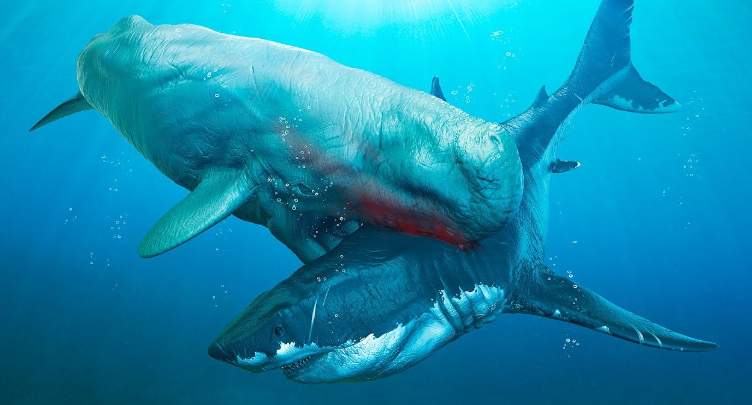
Due to its immense proportions, the megalodon is thought to have reigned as the supreme predator in the underwater realm. Devoid of any natural foes, its solitary vulnerability would have arisen solely from encounters with fellow megalodons.
(An apex predator refers to a creature situated at the pinnacle of the food pyramid, lacking any documented predators.)
Megalodon Fossils
Sharks possess a unique skeletal structure composed of cartilage, the same soft tissue found in our nose and ears, rather than bone. This interesting feature leads to a rapid disintegration of their bodies, making fossilization a rare occurrence.
However, the teeth of sharks are made of dentin, a robust and calcified tissue even harder and denser than bone. These teeth are further protected by a tough enamel shell. Due to their durability, shark teeth take significantly longer to decompose, making them more likely to undergo fossilization.
As sharks continually shed their teeth throughout their lives, it comes as no surprise that shark teeth are among the most frequently discovered types of fossils. The most prevalent fossils of the megalodon, an ancient shark species, are overwhelmingly its teeth. Only a few other body parts, such as vertebrae (segments of the backbone), have been found. Interestingly, fossilized droppings known as megalodon coprolites have also been unearthed.
Remarkably, due to their substantial size, ancient people once believed that megalodon teeth were actually “tongue stones,” erroneously thought to be the tongues of ancient serpents.
Is Megalodon Alive Today?
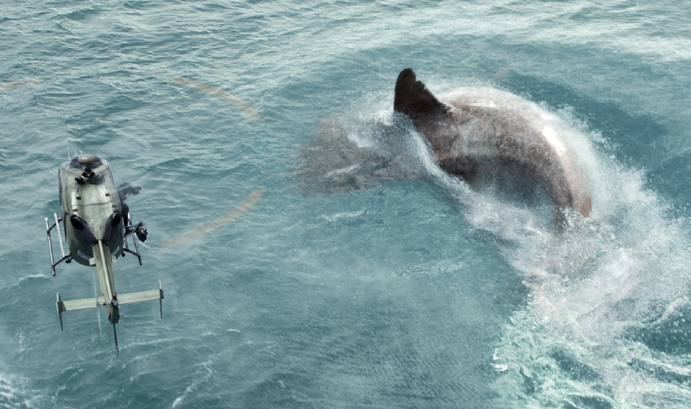
There’s much speculation surrounding the existence of the megalodon in present times, particularly fueled by the action movie ‘The Meg.’ Several individuals have even claimed to have encountered this colossal shark.
Those who believe in the continued existence of the megalodon suggest that it might reside in the deep, unexplored regions of the Earth’s oceans, such as the Mariana Trench in the Western Pacific. Nevertheless, the majority of scientists concur that it would be highly unlikely for a living population of megalodons to go unnoticed.
Several factors contribute to potential disappointment for those seeking the megalodon:
- Sharks are predominantly found in warm waters. The megalodon would struggle to survive in the frigid temperatures of the deepest oceans where it could potentially hide.
- Given that the megalodon fed on other large marine creatures, evidence of bite marks would have been observed on these species.
- Throughout its lifetime, a single megalodon would shed thousands of teeth. Therefore, numerous recently shed teeth would have been discovered on the ocean floor.
- No megalodon fossils younger than 2.6 million years have been found.
- Assuming the megalodon used coastal areas as birthing grounds, any surviving specimens would have been witnessed either during birth or as infants.
In essence, while speculation and reports persist, the scientific consensus suggests that the megalodon’s continued existence remains highly unlikely based on the available evidence.